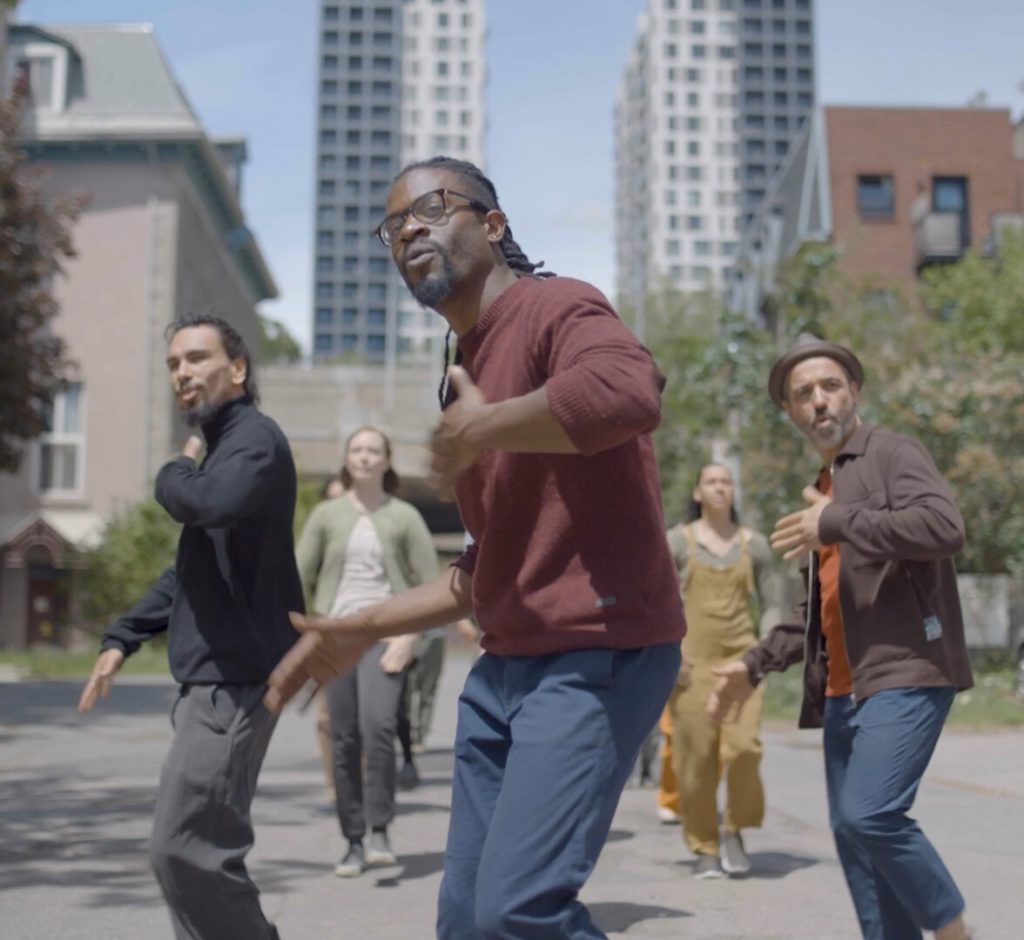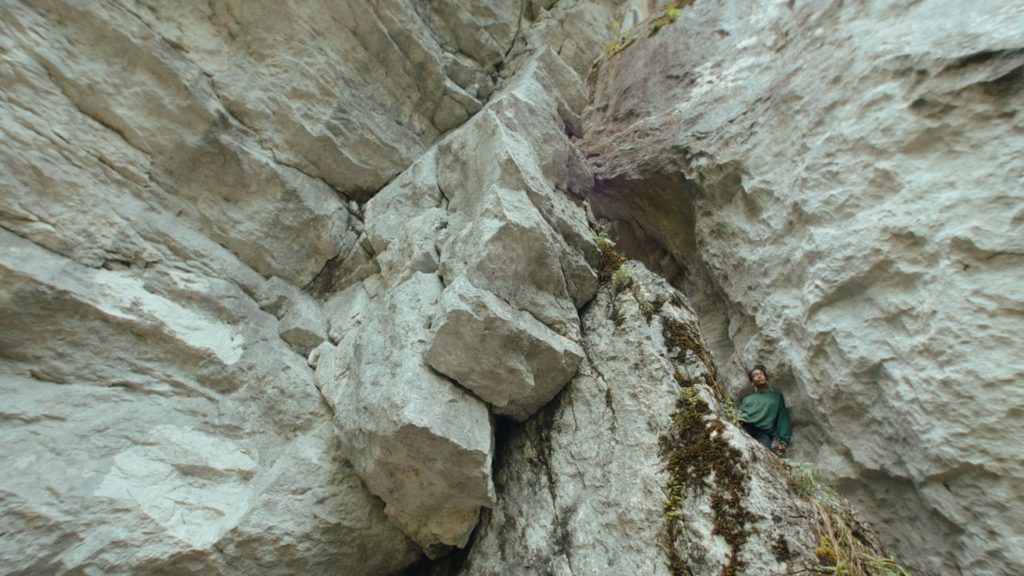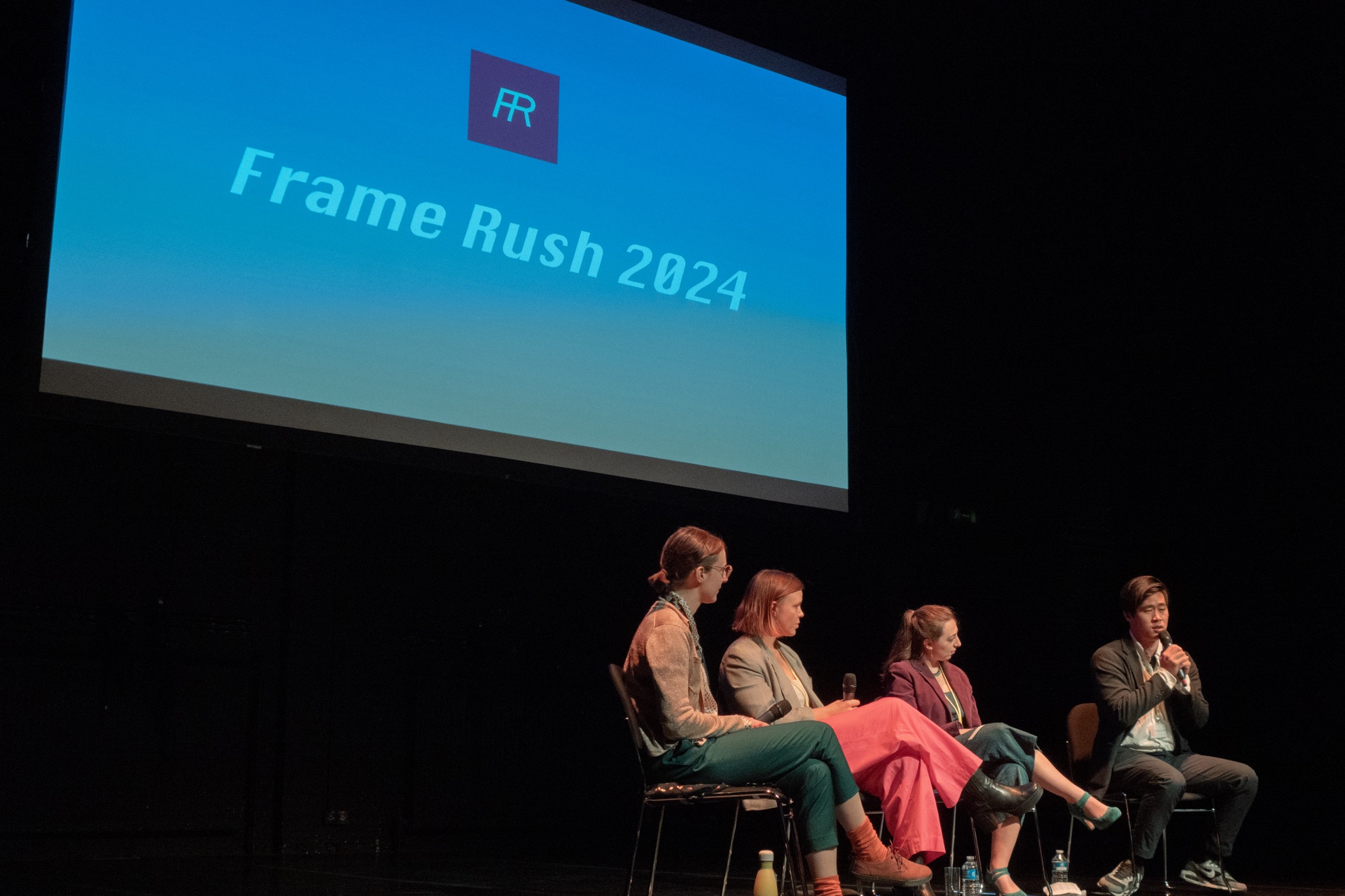Words by Florence Nicholls.
Frame Rush, curated and programmed by the MA Screendance students at London Contemporary Dance School took place a couple of weeks ago. This event, that showcased ten thoughtfully selected dance films from artists across the world, pieced together a story of belonging and longing for home, be that a place, person or within one’s own body. Each work resonated with the topic, “What it means to be present in today’s society”.
Tanya Rojas Magdaleno’s Covered in Spicy Salsa is a film about homesickness as much as it is a critique on Western stereotypes of Latin culture. In the gloomy morning light on the beach of the River Thames, Magdaleno covers her skin in spicy salsa and sunbathes. Magdaleno asked the question, “What is this disguise called ‘Latin-ness’ that I find myself getting into?”
Fringe and Dúirt Tú felt like a fever dream. In Fringe, the audience is taken deep into the forest in a disorienting portrayal of isolation, sickness and friendship. Jasmine Ellis’s film was an eerie reminder of a dream I had as a child while suffering from tonsillitis. In a state where sounds and textures and physical sensation became distorted, I felt lost in my own room, perplexed by the thin film that separated an imaginary world from reality. My experience watching Fringe is aptly reflected during a breath in the tension in which a character reads aloud something like, “It’s a funny place to be and I understand it, but I might not be able to explain it…” This prickling ability to provoke a sense of kinaesthetic empathy can also be said of Irishia Hubbard Romaine’s Why Do I Always Survive in which a dancing figure is abstracted to a collage of neon outlines that swirl against the darkness. I felt completely immersed in this experience and the fluorescent glitches that shifted to unravel the human form.
In Adrián Cores’ Boogeyman, the protagonist falls in and out of reality by witnessing his situation like an out of body experience. The spectacularly choreographed lighting and protagonist’s masterful performance were a personal highlight of this screening. Cores’ screendance tells the story of a young Black man making his way home, a neighbour, and their misguided call to the police. The words are graffitied in red, “If you see something, say something”, but what exactly did you see?


The subject of this year’s festival invited a diverse range of submissions. I watched with great pleasure the films that centred expressions of joy, strength and celebration despite difficulty. Set during the pandemic, Offering is a procession through an unpopulated Little Burgundy, Montreal. Complex percussive rhythms are built from claps, stomps and clicks then trios break from the marching to perform impressive floor-work sequences. The dance styles, gigue, contemporary, street and circus arts are an engaging medium of storytelling. Additionally, Déjà Nu and Les fleurs du mâle juxtapose the dark and the light, “euphoria and loss”. The audiovisual Poem and Super 8 film inspired by Baudelaire’s Les Fleurs du Mal, appreciate the nuances of holding a personal identity in a political world. Towards the final scene in Déjá Nu, a person sat amongst the rubble of a desolate building recites words inspired by the Nina Simone lyrics for I Ain’t got no/I got life.
Ain’t got no house
No friends.
No schooling.
Got no shoes.
Ain’t got no class.
Got no name.
Got no name.
Not a single nickname
that would make me happy.
Why am I alive?
What have I got?
I got my brains.
My breast.
My neck.
My teeth.
My blood.
My voice.
My sex.
I got my life. My liberty.
When asked about the role that humour plays in his work, Faissal El-Malak told the audience, “Humour is a part of how I process and I want to make work that is genuine and part of who I am.” El-Malak’s The Lizard of My Dream looked like a Jamiroquai music video set in a hand painted red cafe. The lead singer is a green lizard dressed in a suit. This work surpassed my expectations of what a short film could accomplish in under ten minutes, and I was left feeling amused and grateful for it. Later on, Elettra Giunta, the director and choreographer of To Hold My Love, told the audience that she tends not to rely on the term ‘screendance’ to describe her work. Though to some audiences – who likely come from within the dance field- the term is no new news, Giunta suggested that allowing the work to feel at times like a music video, a short film or a visual experience facilitated a broader sense of artistic freedom. After all, To Hold My Love was originally choreographed for the stage.
Frame Rush encapsulated a world of physical expression, storytelling and visual symbolism. From large scale productions to DIY films, I felt reassured by this experience of the notion that creativity is universal.
